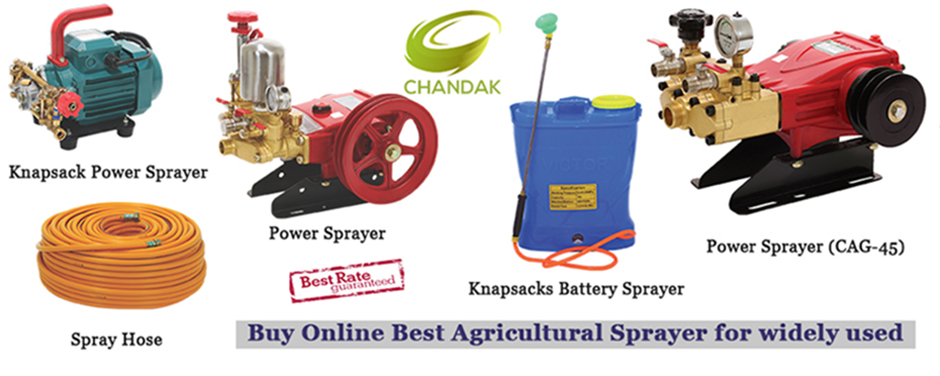Sprayers
are extensively used for agricultural purpose to prevent crops from pests. The
most significant goal in the application of agricultural pesticides is to get
uniform distribution of the chemicals throughout the harvest foliage. Under
dosing may not give the preferred coverage and control required. Overdosing is
expensive as it wastes pesticide and increases the potential for groundwater
contamination.
Science
and technology always help the human beings to improve its life and the base of
life starts from food which derive from agriculture. The invention of a
sprayer, pesticides, fertilizers, etc. brings revolution in the
agriculture/horticulture sector. Specifically
the invention of sprayers, enable farmers to get maximum agricultural output.
They are used for garden spraying, liquid fertilizing, weed/pest control &
plant leaf polishing. There are many kinds of machine-operated sprayers,
the most common of which are low-pressure, high-pressure, air-carrier, and
fogger types. Based on the concept of high or low pressure, sprayer provides
optimum performance with minimum efforts.
There
are various nomenclatures of sprayers available in the market depending upon their
specification, pressure capacity and area of use. Some popular names of
sprayers are:
Power Sprayer, Knapsack power sprayer, battery operated sprayer, Misting Pumps. Some
sprayers are also designed for domestic uses as Car Washers and
Domestic Washers. These are widely used in car garages, big farm houses, hotels
for cleaning of lawns, staircases.
The
technique used for spray crops is very important to get good coverage. It
should be developed to fit the type of equipment that is to be used. With a
hand-held gun, a sweeping motion over the foliage will allow the spray material
to penetrate and get to the underside of the leaves.
With
fixed-fan type units, an airflow pattern needs to be established so that all
the plant canopy receives the pesticide; location of the unit contributes to
good air flow. Using an air circulation system, enhance the movement and
distribution of the fog and mist particles.
The
fans should continue to operate for 30-60 minutes after the spraying operation
is done.
Observation
should be made to ensure that the sprayer is operating properly and that adequate
coverage is obtained.
One
should keep a log of the spraying operations and the results that were obtained
for optimized outcomes. This should include the date, time and location of
application; crop and pest; pesticide used; tank mix; and an evaluation of the
results obtained.
Adjustments
should be made in subsequent applications to try to improve the results.
Proper
selection, calibration & operation of spray equipment is significant in
achieving optimal pest control, as well as in meeting environment & safety necessities.
One
of the famous sprayer application methods is controlled droplet application
(CDA)
CDA
technology produces uniform droplets using a rotary spray nozzle. In operation,
the rotary nozzle accumulates spray solution at the bottom of a spinning cup.
The centrifugal force of the cup creates spray droplets, which are forced up
multiple grooves on the inside of the cup. From there, the solution reaches the
top of the rotary nozzle, and droplets are projected in a circular pattern up
to a six-foot (1.8-m) diameter. Droplet diameter is determined by the speed of
the cup. CDA is seen as advantageous as less water is required per acre of
spray.


